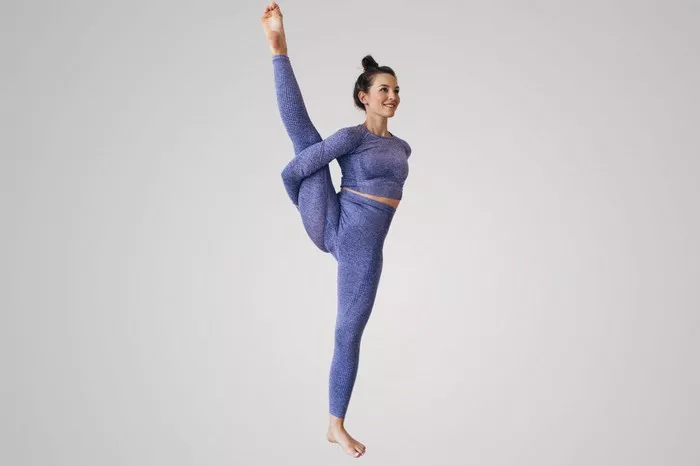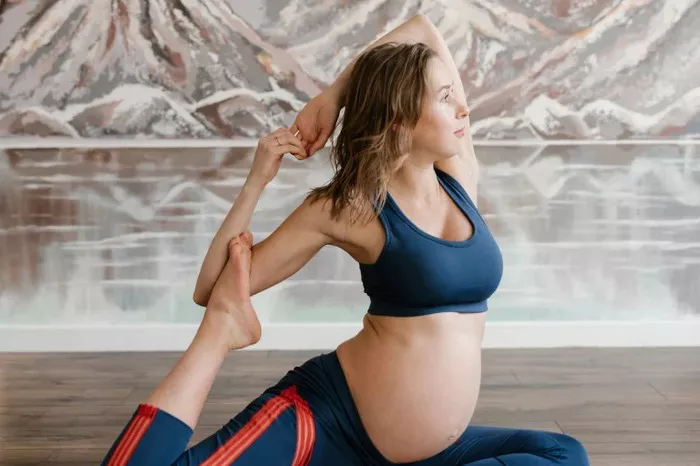Yoga, a centuries-old practice rooted in Indian philosophy, has evolved into various styles and forms that cater to different needs, preferences, and fitness levels. Among the many styles, Ashtanga and Vinyasa Yoga stand out for their dynamic sequences and focus on synchronizing breath with movement. While they share similarities, they also have distinct characteristics that set them apart. This article delves into the nuances of Ashtanga and Vinyasa Yoga, exploring their origins, principles, practices, benefits, and differences.
Origins and Philosophy
Ashtanga Yoga
Ashtanga Yoga, founded by Sri K. Pattabhi Jois in the early 20th century, is based on the teachings of T. Krishnamacharya and the ancient text, the “Yoga Korunta.” The term “Ashtanga” means “eight limbs” in Sanskrit, referring to the eightfold path outlined by the sage Patanjali in the “Yoga Sutras.” These eight limbs are:
1. Yama (moral disciplines)
2. Niyama (observances)
3. Asana (postures)
4. Pranayama (breath control)
5. Pratyahara (withdrawal of the senses)
6. Dharana (concentration)
7. Dhyana (meditation)
8. Samadhi (absorption)
Ashtanga Yoga emphasizes the integration of these limbs, promoting physical health, mental clarity, and spiritual growth. It is structured into six series of increasing difficulty, each designed to purify the body and mind progressively.
Vinyasa Yoga
Vinyasa Yoga, also rooted in the teachings of T. Krishnamacharya, is a more contemporary style popularized by Krishnamacharya’s students, such as K. Pattabhi Jois and B.K.S. Iyengar. The term “Vinyasa” means “to place in a special way,” highlighting the importance of the sequence of postures. Vinyasa Yoga focuses on the fluid transition between poses, coordinated with the breath.
Unlike the fixed sequences of Ashtanga, Vinyasa Yoga offers more flexibility, allowing instructors to create varied and creative flows. This adaptability makes it accessible to a broader range of practitioners, from beginners to advanced yogis.
Principles and Practices
Ashtanga Yoga
Structure and Sequencing
Ashtanga Yoga follows a predetermined sequence of postures, divided into six series: Primary, Intermediate, and four Advanced series. Each series is designed to be practiced sequentially, with practitioners mastering one series before moving on to the next. The Primary Series, or “Yoga Chikitsa” (Yoga Therapy), detoxifies and aligns the body. The Intermediate Series, or “Nadi Shodhana” (Nerve Cleansing), purifies the nervous system, while the Advanced Series, or “Sthira Bhaga” (Divine Stability), cultivates strength and grace.
Breath and Movement
The practice of Ashtanga Yoga is defined by the synchronization of breath (Ujjayi Pranayama) with movement (Vinyasa). Each movement is linked to an inhale or exhale, creating a rhythmic and meditative flow. This breath-movement synchronization generates internal heat, promoting detoxification through sweating.
Drishti and Bandhas
Ashtanga Yoga incorporates specific gaze points (Drishti) and energy locks (Bandhas) to enhance concentration and energy flow. The nine Drishti points focus the mind, while the three Bandhas (Mula Bandha, Uddiyana Bandha, and Jalandhara Bandha) control the flow of energy within the body, promoting stability and strength.
Vinyasa Yoga
Structure and Sequencing
Vinyasa Yoga is known for its creative and varied sequences. Unlike the rigid structure of Ashtanga, Vinyasa classes can differ significantly depending on the instructor’s style and the class’s focus. This flexibility allows for a diverse range of themes, such as strength building, flexibility, relaxation, or a combination of these elements.
Breath and Movement
Similar to Ashtanga, Vinyasa Yoga emphasizes the connection between breath and movement. However, the sequences in Vinyasa are more fluid and adaptable, with each class potentially offering a new and unique experience. The continuous flow of movements keeps the practice dynamic and engaging.
Creativity and Expression
One of the hallmarks of Vinyasa Yoga is its emphasis on creativity and self-expression. Instructors often incorporate music, themes, and variations of poses to keep the practice fresh and enjoyable. This approach encourages practitioners to explore their own bodies and minds, fostering a deeper connection with their practice.
See Also: Zumba Vs Yoga: Which is Better for Your Fitness Journey
Benefits of Ashtanga and Vinyasa Yoga
Physical Benefits
Both Ashtanga and Vinyasa Yoga offer numerous physical benefits, including:
- Strength and Flexibility: The dynamic sequences in both styles build muscular strength and improve flexibility.
- Cardiovascular Health: The continuous flow of movements elevates the heart rate, providing a cardiovascular workout.
- Balance and Coordination: The focus on alignment and movement enhances balance and coordination.
- Detoxification: The internal heat generated during practice promotes sweating, which aids in detoxification.
Mental and Emotional Benefits
Practicing Ashtanga or Vinyasa Yoga can also have profound mental and emotional benefits, such as:
- Stress Reduction: The emphasis on breath and movement helps calm the mind and reduce stress.
- Improved Focus and Concentration: The practice of Drishti and Bandhas in Ashtanga, and the mindfulness in Vinyasa, enhance concentration and mental clarity.
- Emotional Balance: Both styles promote emotional well-being by encouraging self-awareness and mindfulness.
- Spiritual Growth: For those seeking a deeper connection, both practices offer pathways to spiritual growth and self-discovery.
Differences Between Ashtanga and Vinyasa Yoga
While Ashtanga and Vinyasa Yoga share commonalities, several key differences distinguish them.
Structure and Flexibility
Ashtanga Yoga:
- Follows a fixed sequence of postures.
- Practitioners progress through six series in a set order.
- Offers a disciplined and structured approach.
Vinyasa Yoga:
- Features varied and creative sequences.
- Instructors design classes with different themes and focuses.
- Provides a flexible and adaptable practice.
Teaching Style and Environment
Ashtanga Yoga:
- Traditionally taught in a Mysore-style format, where practitioners work at their own pace with individual guidance from the instructor.
- Classes can also be led, with the instructor guiding the sequence.
- Emphasizes self-practice and discipline.
Vinyasa Yoga:
- Typically taught in a led class format, with the instructor leading the group through the sequence.
- Classes often incorporate music and thematic elements.
- Encourages creativity and self-expression.
Physical Intensity
Ashtanga Yoga:
- Known for its rigorous and physically demanding practice.
- Each series increases in difficulty, requiring strength, flexibility, and endurance.
- Suitable for dedicated practitioners seeking a challenging practice.
Vinyasa Yoga:
- Intensity varies depending on the class and instructor.
- Can be tailored to different levels, from gentle flows to vigorous practices.
- Accessible to a wide range of practitioners, including beginners.
Focus and Intent
Ashtanga Yoga:
- Focuses on a disciplined and meditative practice.
- Emphasizes the eight limbs of yoga and the integration of physical, mental, and spiritual aspects.
- Suitable for those seeking a structured and holistic approach.
Vinyasa Yoga:
- Emphasizes creativity, flow, and the joy of movement.
- Allows for exploration and variation in practice.
- Ideal for those who enjoy variety and self-expression in their practice.
Choosing Between Ashtanga and Vinyasa Yoga
The choice between Ashtanga and Vinyasa Yoga ultimately depends on individual preferences, goals, and fitness levels. Here are some considerations to help decide which style might be best for you:
Goals and Intentions
If you seek structure, discipline, and a progressive practice, Ashtanga Yoga may be the right choice. Its fixed sequences and emphasis on the eight limbs of yoga provide a comprehensive and holistic approach.
If you prefer variety, creativity, and a more flexible practice, Vinyasa Yoga might be more suitable. Its adaptable sequences and focus on flow allow for a diverse and enjoyable practice.
Fitness Level and Physical Capabilities
If you are physically fit and enjoy a challenging practice, Ashtanga Yoga offers a rigorous workout that builds strength, flexibility, and endurance.
If you are new to yoga or prefer a less intense practice, Vinyasa Yoga can be tailored to different levels and abilities, making it accessible to beginners and those with physical limitations.
Personal Preferences
If you value tradition and a structured approach, Ashtanga Yoga’s set sequences and disciplined practice may resonate with you.
If you enjoy variety and self-expression, Vinyasa Yoga’s creative and varied flows offer a dynamic and engaging practice.
Lifestyle and Schedule
If you have a regular schedule and can commit to a consistent practice, Ashtanga Yoga’s structured sequences and daily practice routine may suit you.
If you have a busy or unpredictable schedule, Vinyasa Yoga’s flexible and varied classes can accommodate your lifestyle.
Conclusion
Ashtanga and Vinyasa Yoga each offer unique benefits and experiences, catering to different needs, preferences, and goals. Ashtanga Yoga provides a disciplined and structured approach, emphasizing the eight limbs of yoga and a progressive series of postures. It is ideal for those seeking a rigorous and holistic practice. On the other hand, Vinyasa Yoga offers flexibility, creativity, and variety, allowing practitioners to explore different sequences and themes. It is accessible to a wide range of practitioners and is perfect for those who enjoy a dynamic and engaging practice.
Ultimately, the choice between Ashtanga and Vinyasa Yoga depends on your personal preferences, fitness level, and goals. Both styles offer profound physical, mental, and emotional benefits, fostering overall well-being and spiritual growth. Whether you choose the structured path of Ashtanga or the fluid flow of Vinyasa, you will embark on a rewarding journey of self-discovery and transformation.
Related topics:


















